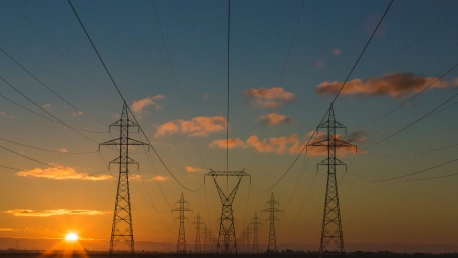The U.S. Department of Energy’s recent release of the “Pathways to Commercial Liftoff: Innovative Grid Deployment” report signals a pivotal shift in strategies aimed at bolstering the efficiency and capacity of the nation’s power grid. As part of the Liftoff series that commenced in March 2023, this document serves as a blueprint for implementing cutting-edge solutions which are not only available commercially but are also substantially underused. Highlighted technologies such as advanced conductors, dynamic line rating, and energy storage stand to substantially support the country’s peak demand growth, estimated at 20–100 GW over a decade by the North American Electric Reliability Corporation. These technologies are critical levers in transforming America’s energy landscape, contributing to enhanced grid reliability, resilience, and cost efficiency.
A Near-Term Solution with Long-Term Benefits
The introduction of the Liftoff series by the DOE is slated to have a profound impact on the current energy grid, emphasizing implementations that offer near-term solutions with long-lasting benefits. The outlined strategies promise enhancements that will not only bolster present systems but prepare them for future challenges. The advanced grid solutions cited in the DOE’s report are designed for rapid deployment within a three to five-year timeframe, leveraging the existing infrastructure to avoid imposing additional costs on household ratepayers. The integration of these technologies represents a cost-effective approach to traditional grid upgrades, one that is not only achievable in a short period but also poised to deliver improved grid performance and pave the way for a more resilient energy landscape.Through the DOE’s prospective initiation of 6-12 significant “no regrets” projects across various utility contexts, a foundation for repeatable operational and investment models is anticipated to be laid out. These endeavors aim to mitigate the risks linked to the wide-scale adoption of these advanced grid solutions. The proactive approach taken by the DOE in this regard could ensure that future investments are well-informed, risk-averse, and, importantly, demonstrate a successful track record that could serve to bolster stakeholder confidence.
Financing the Future Grid
President Biden’s Investing in America initiative has significantly bolstered the U.S. energy sector, pouring over $13.1 billion into modernizing the grid. This monumental push, managed by the DOE’s Grid Resilience and Innovation Partnerships Program, aims to enhance system resilience and flexibility crucial for handling electrical disruptions. A strong federal signal, this financing lays the foundation for private investments, fueling a race toward a sustainable energy future with goals of net-zero emissions by 2050. Public engagement is vital, as indicated by requests for open feedback on Liftoff reports and plans for future webinars. Such collaboration between government funding and stakeholder involvement is poised to keep electricity reliable and cost-effective for all citizens, furthering America’s commitment to an inclusive energy transformation.









